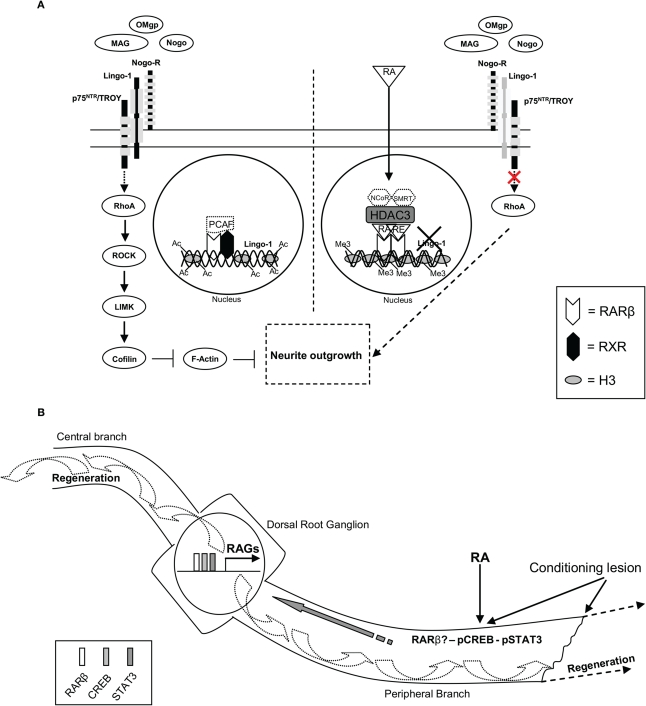Figure 1.
RA-RARβ dependent direct transcriptional repression of inhibitory myelin signaling and a hypothetical schematic of RA involvement in retrograde signaling, RAGs expression, and axonal regeneration. (A) Following RA treatment HDAC3 binding to the RARE of the Lingo-1 promoter decreases acetylation of H3 lysine 9 and possibly displaces PCAF binding. Meanwhile, an increase in methylation of H3 lysine 27 is observed, coupled with strong binding of a RARβhomodimer to the RARE of the Lingo-1 promoter repressing Lingo-1 expression. This is believed to displace the equilibrium of the NogoR complex and block the activation of RhoA, thus leading to neurite outgrowth. Other possible members of this transcriptional repressor complex may include NCoR and SMRT (indicated with dashed lines). (B) Following a conditioning peripheral lesion and RA treatment an increase in RARβ, pCREB, and pSTAT3 levels are observed. All three have been shown to be vital to PNS axonal regeneration. CREB and STAT3 have been shown to play a role in retrograde signaling involved in the induction of RAGs expression prior to axonal regeneration. It will be intriguing to examine if RA signaling activates these three transcription factors to work in concert regulating RAGs expression to induce both axonal CNS and PNS regeneration in vivo.

